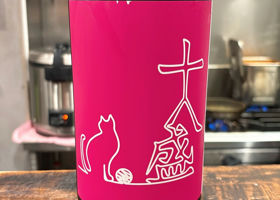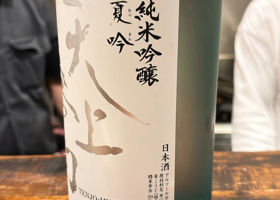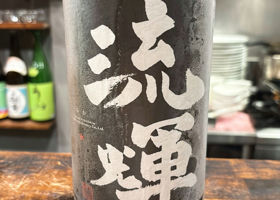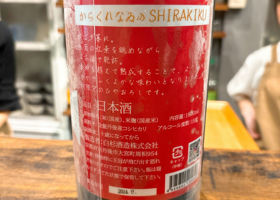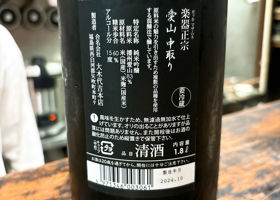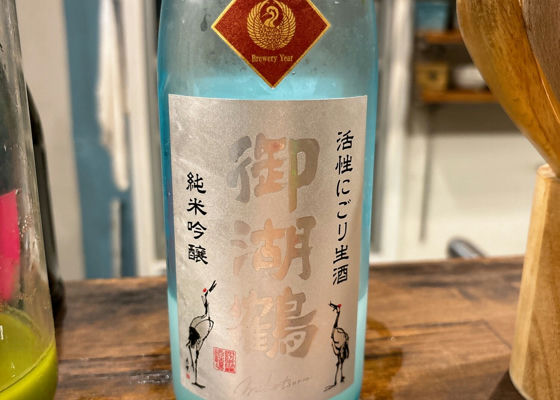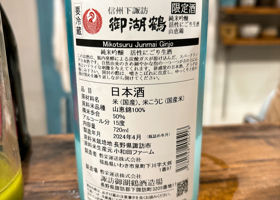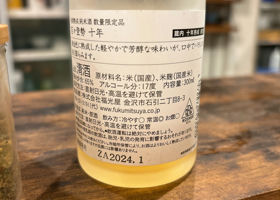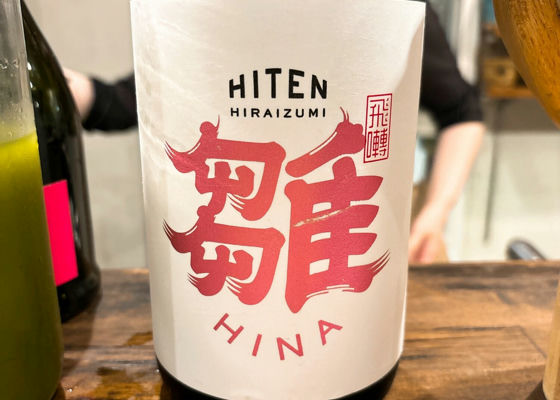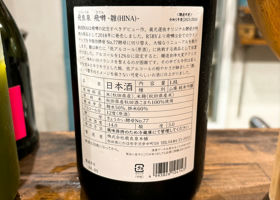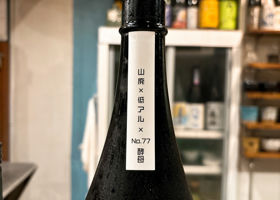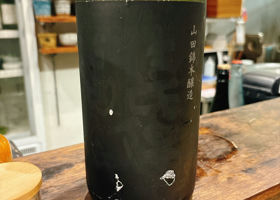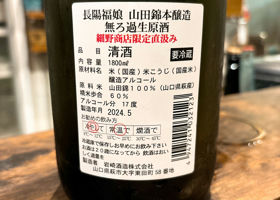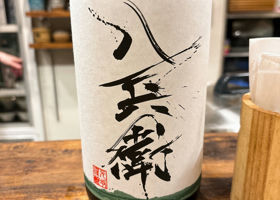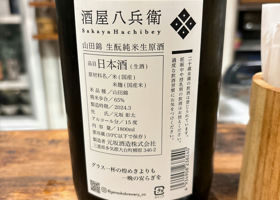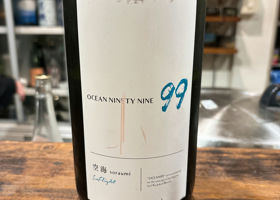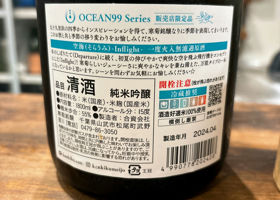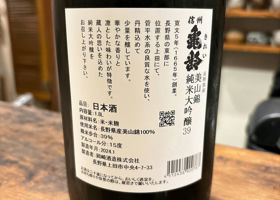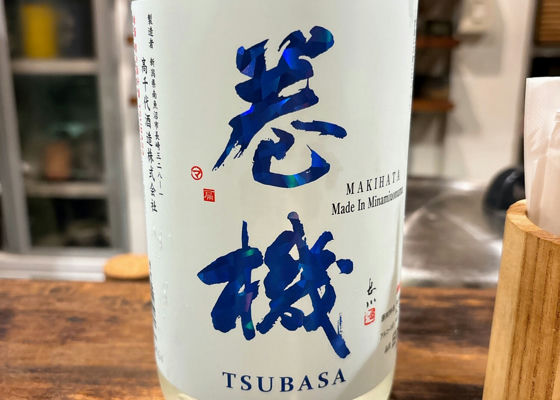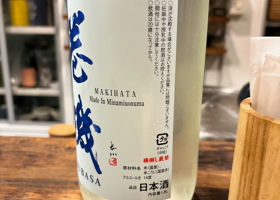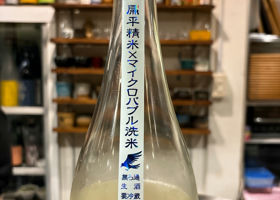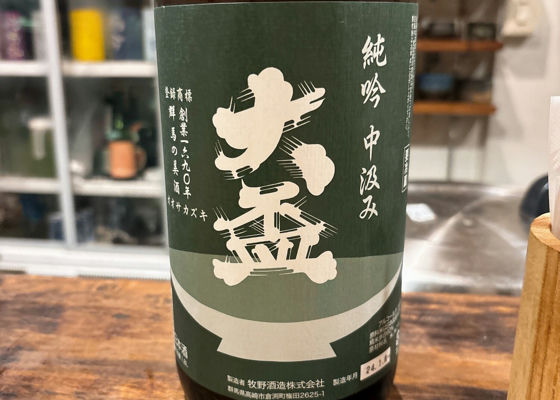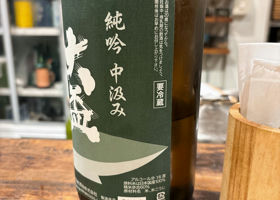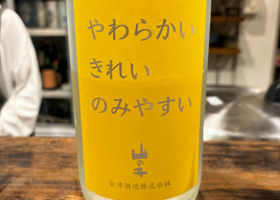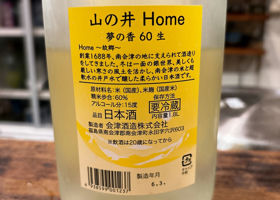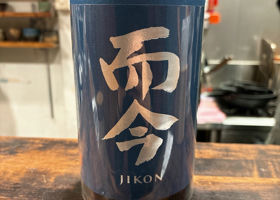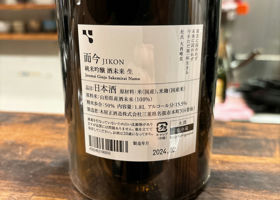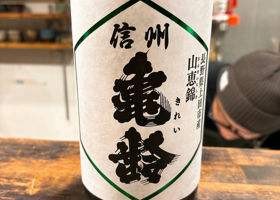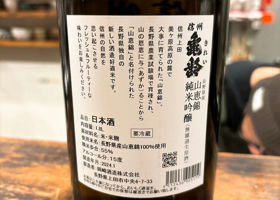Timeline
やす☆The first 18 heaping. Fresh, juicy taste. Slightly strong raw taste. やす☆The beautiful melon-like sweetness and flavor typical of 50% polished wines is impressive. やす☆It has the flavor of rice, but as the name suggests, it is crisp and dry. やす☆First Shirakikyu. It has a deep and clear flavor typical of autumn sake, and has a good sharpness. It gives the impression of being a versatile all-around food sake. やす☆The clear instrumental flavor and the sweetness typical of Aizan can also be felt. やす☆The first Suizuan. It has a sweet flavor reminiscent of melon and muscat with lemon-like acidity. The overall taste is crisp and light. やす☆There is no sense of gas, perhaps because the bottle has been open for some time. It has a crisp taste with clear acidity and a hint of nigori flavor. やす☆The gasiness was diluted due to the days since the bottle was opened, but there was a good balance of melon and muscat-like sweetness, nigori graininess, and acidity.
I can imagine it would have tasted even better on the palate. takeshonI want tomato ramen on a hot day🤣. やす☆I added a picture of tomato ramen for you takeshon 🍜. やす☆The owner gave me some of it.
Mellow and matured at room temperature, caramelized but not twisted, easy to drink. やす☆The first Tama Hibiki. It is petit fresh, with a subtle sweet umami flavor and a sharp sharpness accompanied by a clean acidity. やす☆It has the clean, easy-drinking character of low-alcohol jungin and the sharpness that accompanies the acidity of yamahai. やす☆The first Choyo Fukumusume Aru Soze is a PB from Hosono Shoten.
It has a refreshing taste, but the heaviness of the 17% draft comes later. There is no sense of alcohol, and it is very drinkable for an alky sake. やす☆When served cold, the fresh acidity of the sake is dominant. As the temperature rises, the flavor increases and the acidity is accompanied by a sharpness that is to my liking. やす☆Not very glamorous for a cold chrysanthemum, with a deep grape-like juiciness. The impression seemed different from last year. やす☆The first sip is served.
The aroma is surprisingly subdued. The aroma is surprisingly subdued, and the mouthfeel is petit-fresh despite being fire-aged, perhaps because it is a first sip.
Not only is the 39% polished clean, but it also has a deep, apple-like juiciness that is good. It is not too flashy, and the bitterness finishes it off with a nice cohesiveness that allows it to be served as a mealtime drink. やす☆Light and fruity, with a strong melon and muscat-like fruity sensation. A modern sake with a low alcohol content and no Niigata feeling at all. やす☆Fresh acidity and melon-like sweetness are concentrated, and the bitterness tightens it up. Good balance. やす☆The first mountain well.
It has a soft mouthfeel. The crisp, refreshing acidity is impressive, but there is also a sweet umami flavor with apple-like fruitiness. やす☆Clear and refreshing. The sweetness is moderate, with a surprisingly strong impression of umami and crispness. やす☆Fresh, clean and clear mouthfeel. It has a melon-like taste, but not too much sticky sweetness, which is a good impression. RecommendedContentsSectionView.title
